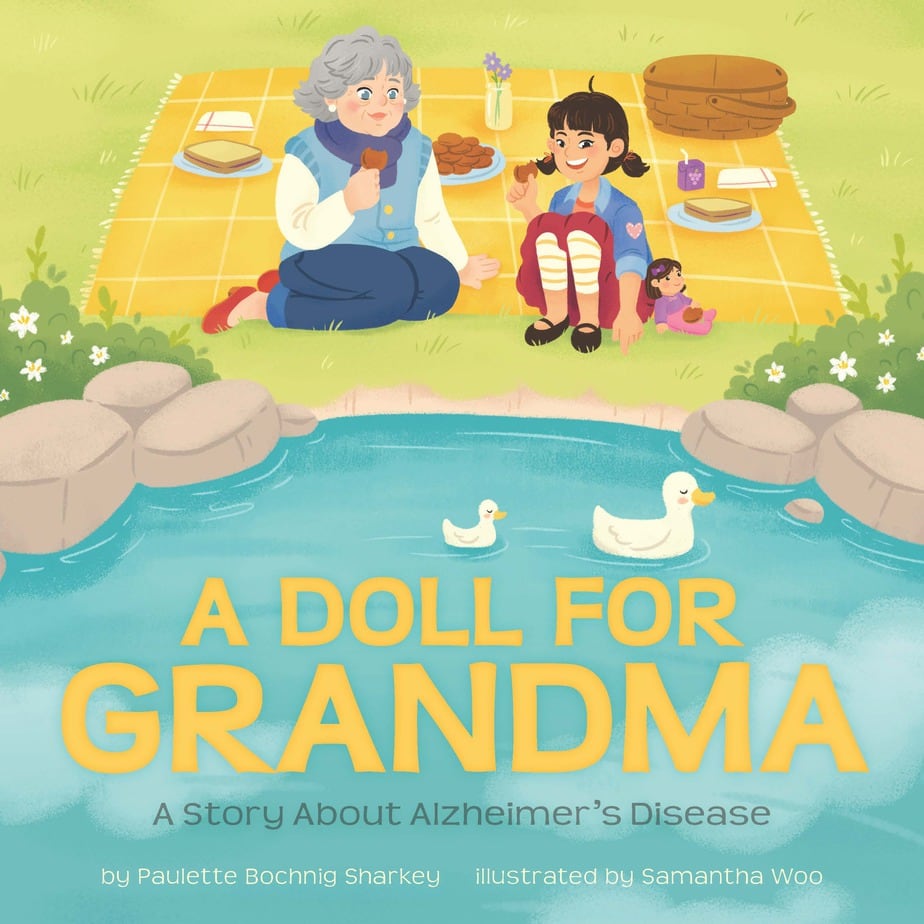 A Doll for Grandma: A Story about Alzheimer’s Disease
A Doll for Grandma: A Story about Alzheimer’s Disease
by Paulette Sharkey
When I sign copies of my children’s book, A Doll for Grandma, I add the words “Spread kindness.” Because at its heart, it’s a story about kindness. It’s also about love and empathy and the special bond between grandparent and grandchild. It’s about adapting to change. And, of course, it’s about Alzheimer’s disease.
My interest in writing about Alzheimer’s started with music. About 15 years ago, after retiring from my job as a reference librarian, I read that musical memories are held in a part of the brain often left undamaged by Alzheimer’s. I started visiting memory care homes in my community to play the piano for the residents. Their response was astounding. People who could no longer recognize family or friends could recognize old, familiar songs. Dara, who could no longer speak, sang every word of “You Are My Sunshine,” loud and clear. Leo jumped up and jitterbugged when I played “Twelfth Street Rag.” Rose reached for her husband’s hand when she heard Irving Berlin’s “Always,” their wedding song.
These volunteer experiences, and years spent later helping to care for members of my own family, taught me that I could give people living with Alzheimer’s moments of joy. I wanted other people to know this, too. And I thought a good place to start was with children.
A Doll for Grandma is a story about a little girl named Kiera who has a close relationship with her grandmother. When Grandma develops Alzheimer’s, Kiera is confused by the changes. The old ways she and Grandma played together no longer work. Kiera pays close attention to what Grandma says and does, and she figures out a new way for them to play: She gives Grandma a doll and they take care of their “babies” together.
Kiera models dementia friendly behavior. She shows the best way to love people living with Alzheimer’s: Just as they are, without correcting their misperceptions or trying to bring them back into our reality. When Grandma says, “I had fried mosquitoes and a cup of hot tea for lunch,” Kiera joins Grandma in her world and asks, “Was it good?”
I drew on real-life experiences to write A Doll for Grandma. The line about fried mosquitoes was spoken by a friend’s grandma with Alzheimer’s. The piano scene was inspired by my volunteer work; a therapy dog scene honors my mother’s memory.
Most of the story takes place in a memory care home, a setting not often shown in children’s books. I wanted children to see what goes on there, so that visits could be less frightening. And the story depicts not only memory loss but other symptoms of Alzheimer’s, like fidgeting and trouble walking. A Doll for Grandma concludes with a wonderful page for parents, “Helping Children Understand Alzheimer’s Disease,” written by AlzAuthor Judy Cornish, founder of the Dementia & Alzheimer’s Wellbeing Network® (DAWN).
I hope that I have written an uplifting book. Yes, there is loss with Alzheimer’s disease. But the ability to love—and to feel loved—remains. And moments of great joy are still possible. Kiera makes Grandma feel special and valued. In the end, that’s what matters.
 About the Author
About the Author
Paulette Sharkey is a writer and pianist who performs in assisted living and memory care facilities in and around her community of East Lansing, Michigan. Her writing has appeared in Parent & Preschooler, Parents, Highlights for Children, Cricket, and other magazines. A Doll for Grandma is her first children’s book.
Website: paulettesharkey.com
Twitter: @pbsharkey
A Doll for Grandma: A Story about Alzheimer’s Disease by Paulette Bochnig Sharkey, illustrated by Samantha Woo. Beaming Books, 2020.
Available on Amazon (hardcover and Kindle edition)


